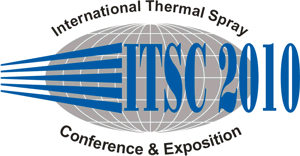
|
2328 |
|
Effect of mullite on thermal shock behavior of yitria stabilized zirconia (YSZ) coatings |
|
Ekrem Altuncu / Kocaeli University Hereke Borusan Campus
Vocational School of Asim Kocabiyik, Technical Programs
Sakarya University, Thermal Spray Research and Application Laboratory(Collab), Turkey Ahmet Türk / Sakarya University, Esentepe Campus, Department of Metallurgical and Materials Engineering, Turkey Fatih Üstel/ Sakarya University, Esentepe Campus, Department of Metallurgical and Materials Engineering, Turkey |
|
Thermal barrier coatings (TBC's) have been developed to protect components in gas turbine engines from high-temperature environmental attack. With continuously increasing demands for significantly higher engine operating temperature, new generation TBC systems must be designed for both thermal and environmental protection of the engine components in high temperature conditions. However, TBCs tend to spall when they are subjected to thermal cycling due to thermal stresses generated for the thermal expansion mismatch with the underneath substrate as well as the thermal gradients, residual stresses, phase transformations, progressive sintering of the ceramic top coat and corrosive attack of the environment. Yttria-stabilized zirconia (YSZ) has emerged as the preferred TBC material due to its low thermal conductivity over a range of temperatures. Mullite has a much lower thermal expansion coefficient compared to YSZ. Due to its viscoplastic properties at a given flow-stress and temperature, the deformation rate in mullite is several orders of magnitude lower than that in YSZ. Therefore, mullite based TBCs are expected to be less prone to crack initiation under thermal loading as compared to YSZ TBCs. Previous studies have demonstrated that the addition of mullite to YSZ improves its thermal shock resistance.The present investigation was conceived with the objective to study the thermal shock behavior of a TBC system consisting of YSZ/Mullite, YSZ+Mullite composite, MCrAlY based bond coat and substrate. Thermal shock failure analyses were performed for three coating architectures. Microstructural and phase studies were carried out for the specimens exposed to severe thermal shock conditions. The effect of coating architecture and thermal shock crack morphology were investigated. |